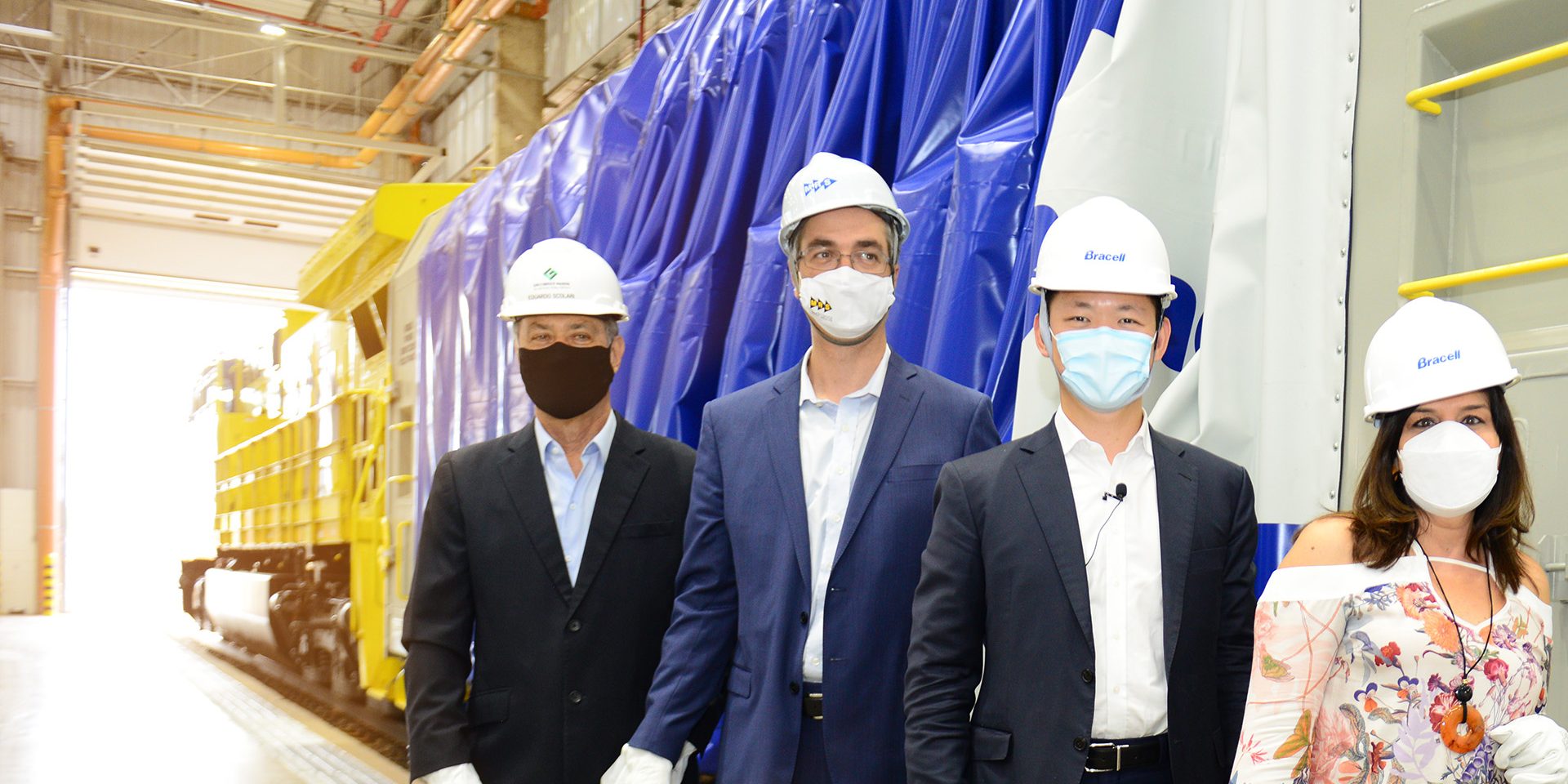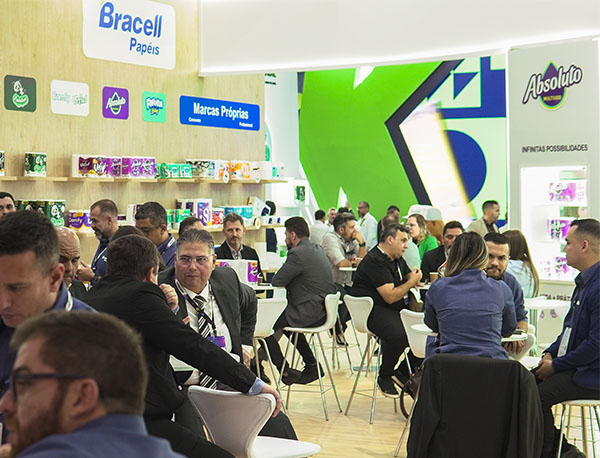Multinational will use the railroad network to ship pulp to the Port of Santos
This Thursday, 7, Bracell’s, MRS’ and Greenbrier Maxion’s executives gathered in the new intermodal complex of the country, in Pederneiras, State of São Paulo, to inaugurate the railroad terminal reserved to the transportation of pulp. The terminal was built in a partnership between Bracell and MRS, with an investment of R$ 58,5 million considering both the railroad network and the terminal, and became an important milestone for the Brazilian transportation system.
The event was attended by the mayor of Pederneiras, Ivana Camarinha, the vice-mayor, Jonilce Pranas (known as Joãozinho da Farmácia), the president of MRS Logística, Guilherme Mello, the president of Greenbrier Maxion, Eduardo Scolari, the Head of Supply Chain of Bracell SP, Alberto Pagano, and the general director of RGE, Anderson Tanoto.
Bracell’s new plant in Lençóis Paulista, in the State of São Paulo, will demand complex logistics for the transportation of pulp. Pulp will get to the Terminal in sider road trains at an average of 7 to 8 vehicles per hour. The terminal has a warehouse of 9,6 thousand m², in which pulp production will be received, stored, handled and shipped. Train compositions loaded with pulp will leave the Terminal of Pederneiras and run about 510 km through the railroad until they get to the Port of Santos. The compositions will run 24/7, in all 365 days of the year. Each composition is formed by up to three locomotives and 60 trains, and they can carry the volume equivalent to 13 trucks.

For Alberto Pagano, Supply Chain director of Bracell SP, using the railroad as the main form of transportation of pulp “is in compliance with the environmental and sustainability standards adopted by Bracell. Intermodal logistics reduce air emissions in the transportation of pulp. In addition, logistics operations using the railroad are predictable, keep cargo safe, and create jobs both in the surrounding areas of the plant and in the Port of Santos,” Pagano says.
The mayor of Pederneiras, Ivana Camarinha, praised Bracell’s contribution for the economic development of the region. “The company is a dream come true for our region. Thank you for believing in Brazil and in the State of São Paulo. This is the beginning of a great story the company is building in the countryside of São Paulo,” she says.
The intermodal complex built and operated by MRS is a relevant investment for Brazilian logistics. “MRS has been investing in diversifying cargo transported in our railroad. Having spaces such as the Intermodal Complex, in Pederneiras, is crucial for that. Its privileged location and all the support given to us by the city hall only reassures that many new businesses will soon be established around here. Brazil needs to invest in logistics, otherwise it will not be competitive. Brazil faces many problems and if we do not act to have an efficient multi-modal network, we’ll never be able to compete globally,” says the president of MRS Logística, Guilherme Mello.
The project also involved the development and production of a new train model, the FTT total sider, which is adequate to transport pulp. For this challenge, Greenbrier Maxion offered innovative solutions such as: improved opening and closing, reduced tare weight of the train, significant increase in cargo capacity per train and per car, in addition to improved ergonomics in the operation and sealing, avoiding cargo loss by the entry of water during the rainy season. “Bracell believed in Greenbrier Maxion’s engineering team, so we were able to innovate again by developing cars with boarded technology and offering efficiency, safety and sustainability,” says Eduardo Scolari, president of Greenbrier Maxion.



